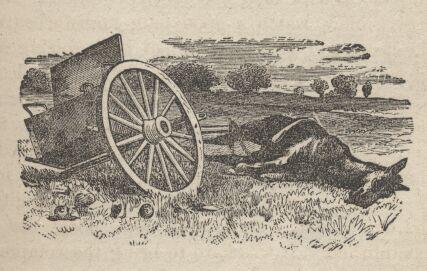Location: Lot 4, Section 5, Township 8 South, Range 5 West, Salt Lake Meridian, 8 ¾ miles from East Rush Valley.
Rush Valley Station was also known Meadow Creek Station, Doc. Faust’s and, erroneously, as Bush Valley. Although identified in the 1861 mail contract as Bush Valley, it is apparently a typographical error or was copied as a result of a misinterpreted hand-written contract. This station was established originally by George Chorpenning in late 1858. Within Utah (present boundaries), Chorpenning had built two relay stations, the one at Rush Valley called Meadow Creek Mail Station and the other at Smith Springs (Fish Springs). There is a question whether the stone building still standing at Rush Valley is the station house. The 1871 survey plat names this building Faust’s House, while the survey notes call it Faust’s Station. This building also has been called the old Fletcher house. We are told the remains of a depression marked the structure known as the station house. It was apparently evident for many years to the east and north of the present structure.
Today, it is commonly called Faust’s Station. It was the first home station west of Salt Lake City for the Pony riders. The station was a large log structure with a low, pitched roof, located in the meadow approximately ¾ of a mile south of the site of the stone monument. The site is on private property owned by Tooele City.
Faust Station was operated by Henry Jacob Faust, who was a native of Germany. He emigrated to the U.S. at an early age, probably around 1841 and attended medical school, but dropped out and went from Missouri to hunt for gold in California with the 1849 Gold Rush. He wasn’t too successful with his endeavour and, since he had joined the Mormon Church, came to Utah in 1851. In 1860 he accepted a position as a station manager and part-time rider with the Pony Express and also raised horses for the Express and the Army. He was probably already there as an employee of George Chorpenning who had the mail contract before Russell, Majors, and Waddell. He and his wife survived a narrow escape with Indians while living at Faust. In 1870 Henry packed up and moved to Salt Lake City where he engaged in the livery stable business. The Faust monument can be seen about 30 miles south of Tooele on state Route 36 and five miles from Vernon. Pres. James E. Faust of the LDS Church First Presidency, has family ties to this historic place. Below is a picture of the original Faust Cemetery, which contains the graves of more than 12 people who lived in Faust.
The property, which includes the stone building and a cemetery, is under private ownership and is closed to the public. The monument north of the area, is misplaced and the log structure across the highway to the east is often referred to as “the original station.” The station site was in a pasture south of the monument (N40 10 27.0 W112 25 39.0) on private land. Nothing remains. There is a BLM information kiosk a few of miles to the west.
In the early 1990s, the Bureau of Land Management erected a Pony Express Trail Interpretive Site on the road to Lookout Pass to serve visitors who are crossing the desert to see the several Pony Express Station markers. The sign encourages visitors to respect the land on which they are traveling. Visitors to the Great Salt Lake Desert and Pony Express Trail are reminded there are no services on the Trail for over 100 miles between Vernon and Ibapah.
Fike and Headley place this station eight and three-fourths miles from East Rush Valley. The 1861 mail contract probably mistakenly identified this station as Bush Valley. Other sources list the stone station as Rush Valley, Bush Valley, Faust's, Doc Faust's, and Meadow Creek. George Chorpenning erected the station in 1858. Henry J. "Doc" Faust later purchased the land as a ranch and raised horses for the Pony Express and later military operations. Faust served as stationkeeper during the Pony Express era and lived on the land until 1870, when he moved to Salt Lake City and went into the livery business. Kate B. Carter identifies Rush Valley as the first home station west of Salt Lake City and notes that the valley and station received their names from a body of water lined with bullrushes in the north end of the valley.
As late as 1978, the stone station house and a cemetery still existed on private land. A misplaced marker also stands north of the site.
We passed a pleasant day in revolver practice, with Al Huntington, the renowned brother of Lot, who had lately bolted to South California, in attempts at rabbit shooting - the beasts became very wild in the evening - and in dining on an antelope, which a youth had ridden down and pistoled. With the assistance of the station master, Mr Faust a civil and communicative man, who added a knowledge of books and drugs to the local history, I compiled an account of the several lines of communication between Great Salt Lake City and California.
(City of the Saints, p 452)
